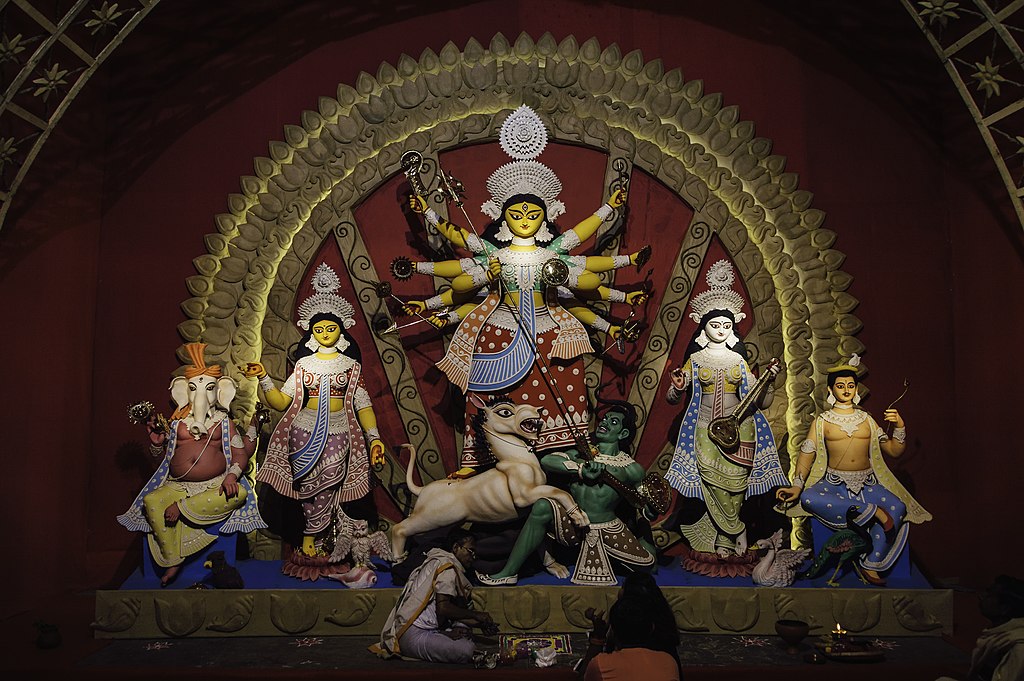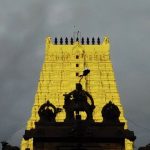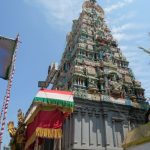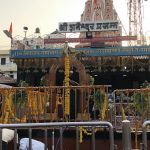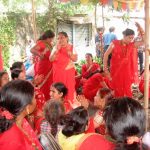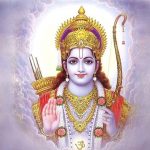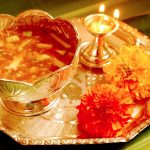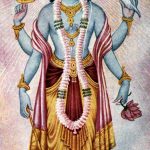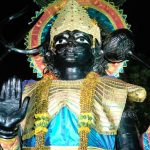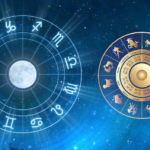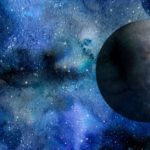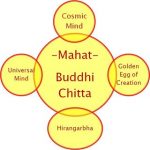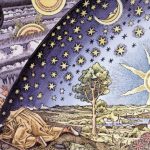
If you are planning a trip to India and want to experience the grandeur and beauty of Indian festivals, then you must visit India at the onset of the Ashvin month of Hindu Calendar, occurring in the months of September or October, as per the English calendar. From the first day of Ashvin, one of the most important festivals of India, Navaratri, starts and the tenth day of this festival marks Dussehra.
Dussehra etymologically comprises of ‘dus’ or ‘evil, bad’ and ‘hara’ which means ‘removal or destruction of the evil’. Hence, it signifies the triumph of good over evil. In addition, this marks the day when good was finally able to overcome bad. There is a unique characteristic of India during Navaratri and Dussehra that the festivities around both are different in different parts of India. It is because the different styles of the celebration of Dussehra depend on the different legends that are followed here. Let us see two of these legends.
Legends of Dussehra
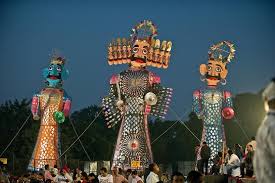
Dusshera Legend of North India
In the north Indian legend, this day is celebrated as the day when Lord Rama won over Ravana. In fact, the nine days of Navaratri is seen as the days of the fierce battle between Rama and Ravana. Ravana was the ruler of Lanka. He kidnaps Sita and brings her to Lanka. In spite of Rama asking him to return Sita, he refuses to do so.
Finally, this leads to the battle between Rama and Ravana. On the other hand, Ravana had the boon from Lord Brahma that no one can kill him. It was only his brother Vibhishan who knew the secret of his mortality. In fact, he helps Rama by giving out the secret to him. Hence, on the tenth day, Rama was successful in killing Ravana with the help of Vibhishan.
Dusshera Legend of East And South India
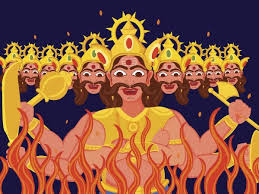
In eastern India, the nine days of Navaratri represents the days of the battle between Goddess Durga and Mahisashur. Mahisasur was an evil demon who had created havoc in the whole world. In fact, he was killing humans and Gods and eating them. Hence, all-powerful Gods Like Brahma, Vishnu, and Lord Shiva combined their power to create Goddess Durga. Goddess Durga killed the comrades of Mahishasur, named Chanda and Munda. In addition, devotees also call her Chamundeshwari because in the form of Kali she beheads many demons and wears them in a garland around her neck. It was on the 10th day, that she finally kills Mahishasur and frees the world from evil.
Dussehra Festival
It takes place on the tenth day of the Navaratri. Additionally, the day marks the end of evil. In all legends around India, this day ends the life of bad.
Dussehra Celebration
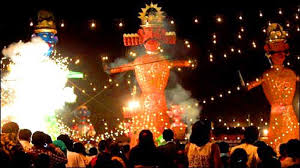
In Northern India, the day marks the last day of Ram Leela. You must keep your evening free to witness this scene of the victory of good over bad. According, to the story of Ramayana, Rama cuts off Ravana’s head many times and each time a new head comes out. This way ten heads appear on his shoulder. Finally, Vibishan, brother of Rama tells him to target Ravan’s naval because there lies his Life. Rama targets an arrow at the naval, and in a few seconds, Ravan dies a fatal death.
On Dussehra, the actors enact this final scene on the stage. The character of Ram holds an arrow towards Ravan’s naval. And, as he shoots the arrow it hits the huge effigies of Ravan standing in the middle of open ground. Once, the arrow hits the effigy it bursts into a ball of fire due to the firecrackers fixed in it. This marks the end of evil.
Festivities in Eastern India
In Eastern India, Goddess Durga returns to her abode in the Himalayas with her children Ganesha, Karthikeyan, Saraswati, and Lakshmi on Dusshera. Women offer vermillion to Goddess and smear it on the faces of her friends and family(only on females). Besides, you will witness women wearing white saree with a red border.
After this, they place the idols in a big truck and carries it towards the river. In addition, men and women will sing bhajans and dance to celebrate the return of the Goddess to her abode and request her to come back in a bigger way the next year. Finally, the idols are submerged in the holy water.

Navratri
Navaratri etymologically means ‘nine-night’. It refers to the nine auspicious days of Navratri, where followers either celebrate the nine days of the battle between Ram and Ravan, as in North and western India or they celebrate nine avatars of goddess Durga, as in Northeastern and eastern states.
Navratri Celebration
In northern India, you will witness Ram Leela as part of the celebration of the nine days of Navaratri. Raam Leela includes a grand fair with food stalls, rides, games and a grand stage for the performance of Ramayana by theatre actors. The Ram Leela take place on all nine days. Generally, Raam Leela witnesses a packed house all over India. Actors enact the role of important characters of Ramayana.
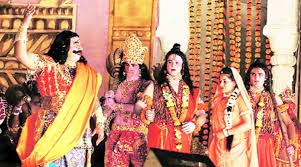
In states of the northeast and east India, the major focus is on Durga Puja. You will see huge pandals in various parts of the states, where Goddess Durga resides with her family – two sons, Lord Ganesha, and Lord Kartika and Goddess Saraswati for nine days. Many pandals also celebrate the nine versions of Goddess Durga. Pandal hopping is the main occupation of devotees during Navaratri.
Fast
Followers of Durga observe fast for either the period of all nine days or on the first and the last day of the Navaratri. Interestingly, it is believed that Goddess Durga visits every home on the ninth day. Pleased with worship and dedication, she visits devotees’ homes in the form of a girl. Hence, small girls are seen as the incarnation of Durga and treated with food and gifts.
Navratri Festival
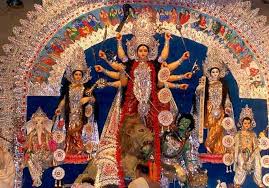
Navaratri is one of the most important festivals in India. It is nine days of fun, frolic, worship, and entertainment throughout the country. You will witness some people observing fast and some feasting on these nine days. The rituals and the festivities differ in different parts of India.
In the north, Navaratri is synonymous with Rama Leela, or the performance of Ramayana on stage. If you go to Uttar Pradesh or Bihar, the cow belt, you will see that they carry out Rath Yatras to celebrate the nine days of battle between Rama and Ravan. In southwest India, you can participate in huge Dandiya performance done to honour and worship the strength and valour of Goddess Durga. In the southeast, people worship Goddess Durga as Chamundeshwari Devi. You will see beautiful decorations and lighting in the Mysore palace during Navaratra.
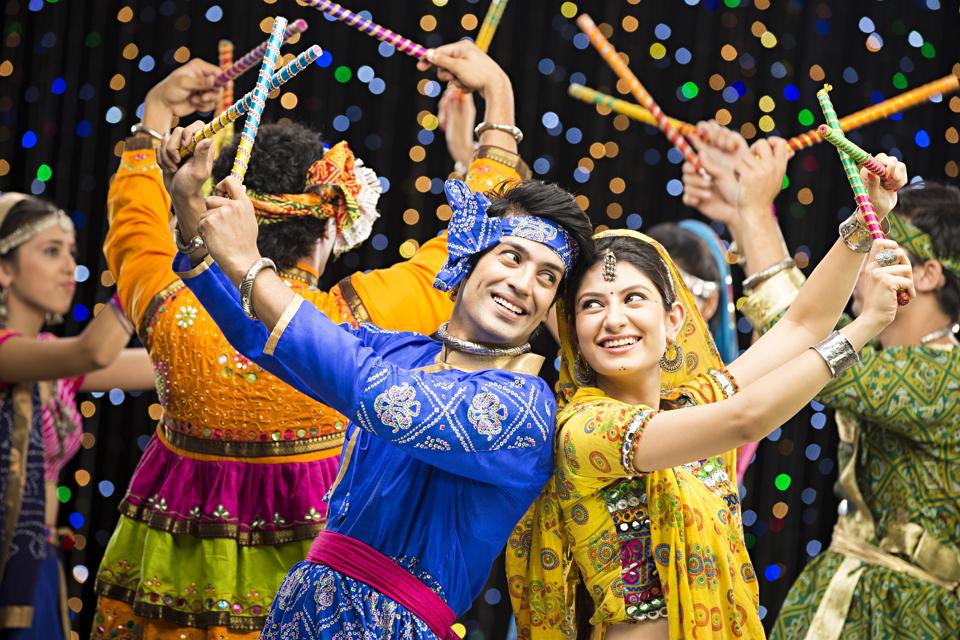
Navratri Mantra
Here, are two of the most powerful mantras of Goddess Durga, which you can always chant during Navaratri.
- Sarva mangala mangalye shive sarvaartha saadhike
Sharanye trayambake Gauri Narayani namosthute
2) Ya devi sarva bhuteshu, shanti rupen sansitha
Ya devi sarva bhuteshu, matra rupen sansthita
Namastasyai, namastasyai, namastasyai, namo namaha!
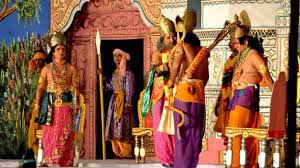
Navratri History
According to the legend of Dussehra, Navaratri is the end of nine days battle between Mahishasur, the mighty demon, and Goddess Durga. The tenth day is Vijayadashami or ‘the day of victory of good over evil’. Since time immemorial, Navaratri festivities are taking place to worship the divine power and warrior ship of Goddess Durga.
Legend of Uma
There is another legend related to Navaratri. The legend talks about a king Daksha, who had a beautiful daughter, Uma. Uma wanted to marry Lord Shiva. She did everything needed to marry him. Finally, Lord Shiva accepts and marries Uma. In spite of the fact that Lord Shiva was so powerful and mighty, the match does not please Uma’s father. When he organizes a yagna, he does not invite his son-in-law. Angry Uma jumps into the same fire, ashamed of her father’s doings.
Losing his wife, Lord Shiva burns with anger and starts performing the Tandav (dance of destruction). The dance brings havoc in heaven as well as on the earth. Finally, Narayan intervenes and promises to revive Uma. She takes birth as Parvati. As per the legend, she visits Earth every year with her family for nine days and goes back to her abode on the tenth day.




